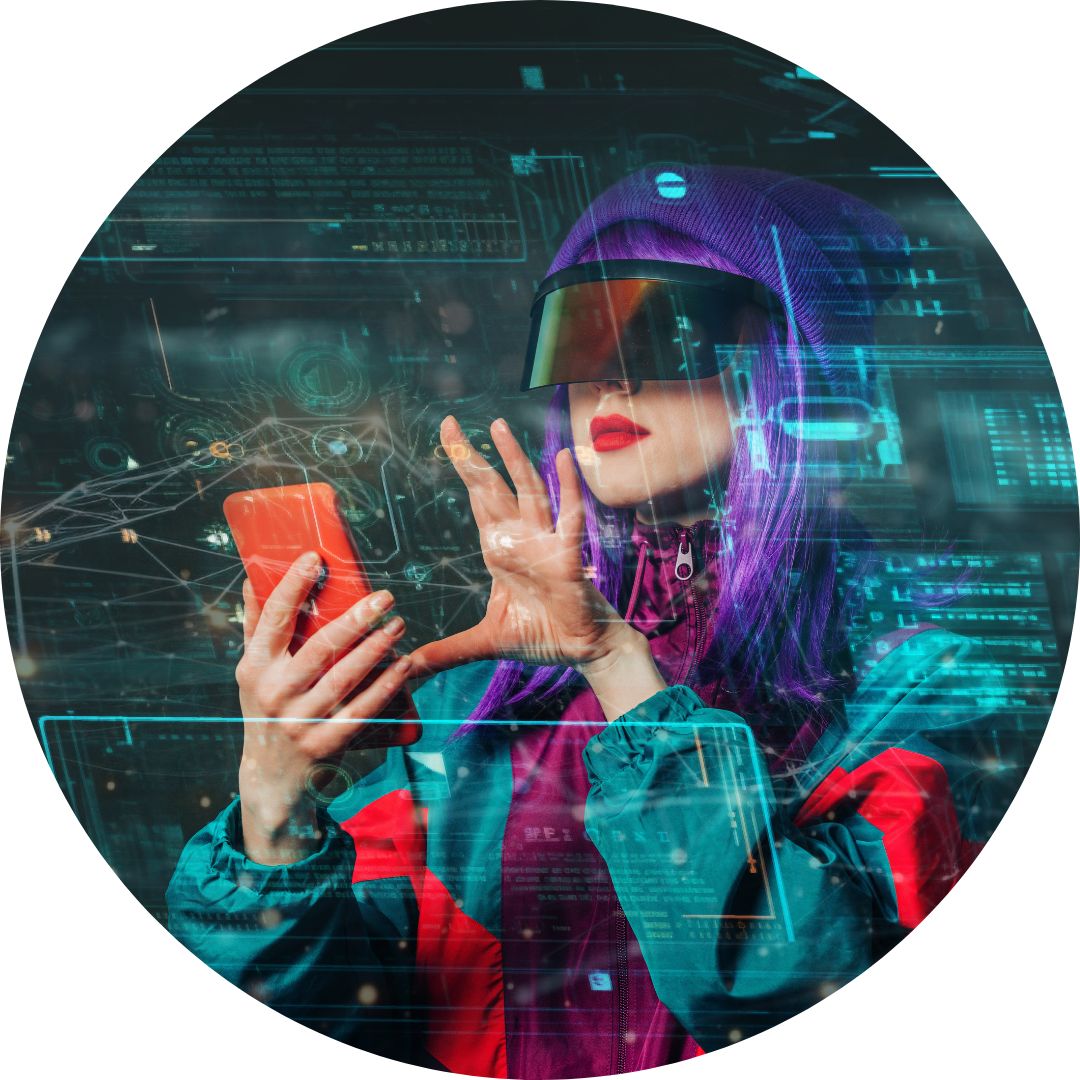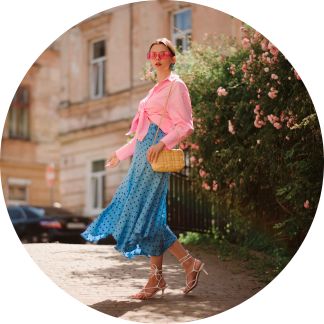Luxury Fashion and Contemporary Art: NFT and Metaverse as Boundless Creative Expression

In recent years, the world of fashion, especially the luxury one, has needed to re-establish its relationship with the consumer, which is profoundly different from how it was in the past. Today, in fact, the public is no longer content to buy a high-priced product to prove its status symbol but is attracted to the brand mainly for its symbolic and emotional power, often traceable to the dimension of direct experience.
The combination of contemporary art and luxury fashion is in this sense a winning one, as these two fields manage to influence each other, thanks to the union of creativity, innovation and design.
But with the advent of digital technologies and the born of NFT and Metaverse, the relationship between Art and fashion has reached new levels of connection and synergy.
Cover photo credits: Masson – stock.adobe.com
NFT: transformation of the concept of artistic property
Before exploring the connection between fashion and contemporary art in depth, let us start by defining what NFT and Metaverse are.
Non-Fungible Tokens (NFT) are cryptographic data units that represent the ownership of an artwork or digital object and are often activated through QR codes. Thanks to blockchain technology, NFTs guarantee the authenticity, uniqueness and traceability of a work. This innovation has opened new opportunities for contemporary artists and revolutionized the concept of artistic property.
In the context of luxury fashion, NFTs have enabled artists to create exclusive digital works of art that can be acquired and owned by collectors and fashion lover. In addition, fashion houses have started to collaborate with contemporary artists to create limited editions of clothing, accessories or virtual objects, sold as NFTs. This has created a new market in which contemporary art merges with the world of luxury and, indeed, fashion.
One of the first luxury brands to enter the Metaverse was Gucci which bought its “land” on The Sandbox to create the Gucci Vault, the new NFT concept store whose virtual shelves house numerous archival and second-hand items refurbished and personalized alongside the proposals of emerging talents that it has always promoted. The Maison Gucci is not new to exploring the potential of digital: in May 2021, on the occasion of the centenary of its foundation, it launched Gucci Garden in collaboration with the gaming platform Roblox, allowing 42 million users to buy collectibles.
Balenciaga, like Gucci, has gained various previous experiences in the digital world. One of these was represented in December 2021 by the launch of its own video game, Afterworld: The Age of Tomorrow, within which the autumn-winter 2021 collection was presented. Burberry is the perfect example of a brand that has launched an NFT collection of 750 pieces within the video game Blankos Block Party which sold out in a few hours. A further step forward was taken by starting a collaboration with Honor of Kings, the Chinese MOBA (Multiplayer Online Battle Arena) for which it has created a series of skins that can be purchased by players to adorn their characters with fashionable outfits.
Prada, which from June 2022 has attached a special NFT to each piece of its Time Capsule: a gif that represents the digital version of the physical article. For the customer, this is a personalized experience that contributes not only to engaging the public more at the time of purchase, but also to strengthening the long-term relationship they have with the brand.
Louis Vuitton, strengthened by previous experiences in the digital world, has proposed its own historical-themed video game in the Metaverse that traces the birth of the brand with the historic mascot Vivienne. The 200th anniversary of the brand was also honored by the artistic collaboration with Beeple who lent himself to the construction of thirty 30 NFTs present within the game.
In general, however, let us remember that fashion has always been attracted by the seductive power of art, so much so that over time many exhibition spaces have sprung up around the world where these two worlds meet.
Prada and Louis Vuitton have gone one step further– Fondazione Prada in Milan and Fondation Louis Vuitton in Paris may carry the names of fashion houses–but they are fully-fledged art galleries.
Photo credits: Framestock – stock.adobe.com
Metaverse: a new space for exploration and interaction
Metaverse is a term used to describe a shared virtual environment accessible through digital devices. It is an imaginary place where people can interact with each other and with digital objects or artworks. Through Metaverse, contemporary artists can explore new forms of expression and engage audiences in ways never seen before.
This digital dimension reached its peak during the lockdown period, when everyone saw the virtual world as a new way not only to socialize and entertain, but also to work and above all to create new opportunities.
Now that the world has gradually returned to normal, the enthusiasm seems to have waned, but this is only apparently so.
All this time, innovators and entrepreneurs are exploring the implementation of NFT as a possible key to breakthrough. Indeed, they are considering structuring the Metaverse market around them, allowing users to own, trade and sell exclusive digital objects within this virtual world.
This new direction could breathe new vitality into the Metaverse, as NFT offers monetization opportunities for artists, developers, creatives and, in this case, also designers, stimulating further investment and innovation.
Despite being in a re-organization phase, industry experts are working to build a solid and sustainable foundation for the future of this digital reality. Of course, only time will tell whether the implementation of NFT will succeed in unlocking the full potential of Metaverse and make it an integral part of our everyday life.
Metaverse and fashion: the advantages
In fashion, Metaverse offers a virtual stage to present collections, fashion shows and artistic collaborations. Fashion houses can create virtual spaces where users can explore their creations, interact with objects and participate in digital events.
The digital garment can be designed to be interactive and customizable, allowing the user to make aesthetic changes or adapt it to their own tastes and desires in a short time, compared to doing it physically. This level of customization offers a more immersive experience than buying a pre-defined physical dress.
This allows a deeper and more immersive engagement with the brand, creating an emotional connection between consumers and contemporary art.
Other benefits include the issue of reduced consumption and sustainability. Buying a garment in NFT form, in fact, avoids the physical production of the garment, thus reducing the environmental impact associated with production, distribution and disposal. This approach can be considered more sustainable and in line with growing environmental concerns.
Furthermore, they increase global accessibility, as NFTs eliminate the geographical and logistical barriers associated with shipping and transporting the physical garment. Anyone, anywhere in the world, can purchase and own the virtual dress simply by having access to an Internet connection.
Yet, despite the rapid advancement of AI also in the fashion industry, there are several reasons why artificial intelligence will never completely replace designers in designing a collection, first and foremost creativity, which is dictated by emotions, cultural and social trends, and the ability of designers to understand human emotions, ensuring that every garment designed has an emotional impact on consumers.
Designing a collection also requires an aesthetic sensibility and personal taste, which are independent of AI. AI may be able to analyze data and trends, but the ability to translate this information into unique and refined works is still a hallmark of us humans.
At the end, AI may be useful in ‘assisting’ designers with tools, stimuli and suggestions, but the ability to conceive, create and connect with the public remains a territory dominated by human ingenuity and sensitivity. This is why they will continue to be an irreplaceable part of the fashion world.
The Fusion of Contemporary Art, Fashion, NFT and Metaverse
The strategic inclusion of contemporary art in the field of luxury fashion has created several synergies and opportunities. Contemporary artists can gain greater visibility and monetization of their works through the sale of NFT. At the same time, luxury fashion houses can offer their customers unique collections, limited editions and immersive experiences in Metaverse.
This fusion of art, fashion, NFT and Metaverse opens up new creative and commercial scenarios. Artists can experiment with new digital media, such as virtual reality and artificial intelligence, to create immersive and interactive works of art. Fashion houses can create virtual shopping experiences where customers can customize their avatars and try on digital clothes before purchase.
Conclusions
In conclusion, the convergence of art, fashion and digital technologies offers new opportunities for artists and fashion houses to create immersive and unique experiences for audiences, redefining the boundaries of contemporary art and opening new horizons for the fashion industry.
At the moment, the power of companies lies in their ability to reduce the distance between brands and Art, creating ever new content, stimulating not only the creation of a new digital world, but also bringing young people and Art enthusiasts closer to a world only apparently distant.




